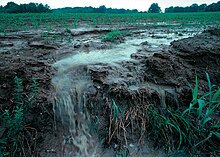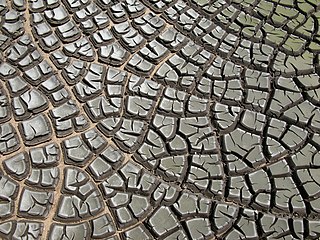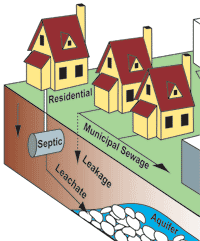| Compound | Uses | Where it is Found | Health Risks |
|---|
| Trichloropropane (TCP) | Chemical intermediate, solvent, and cleaning product | TCPs are denser than water, so they sink to the bottom of aquifers and contaminate them, they also have a low capacity to be absorbed organically and leach into soil or evaporate, contaminating the air | Considered a likely carcinogen by NOAA |
| Dioxane | Stabilizer of chlorinated solvents, manufacturing of PET, manufacturing by-product | Often at industrial sites, and they move rapidly from soil to groundwater, although it was phased out as part of the Montreal Protocol it is very resistant to bio-degradation and has been found at over 34 EPA sites | Rapid disruption of lung, liver, kidney, spleen, colon, and muscle tissue, may be toxic to developing fetuses and is a potential carcinogen |
| Trinitrotoluene (TNT) | Pure explosive, military and underwater blasting | Major contaminant of groundwater and soils | Listed as cancer-causing by Office of Environmental Health, may cause carcinoma and bladder papilloma |
| Dinitrotoluene | Intermediate to form TNT, explosive | Found in surface water, groundwater, and soil at hazardous waste sites, and may be released into the air as dust or aerosols | Considered a hepatocarcinogen and may cause ischemic heart disease, hepatobiliary cancer, and urothelial and renal cell cancers |
| Hexahydro-trinitro-triazane (RDX) | Military explosive | Exists as particulate matter in the atmosphere, easily leaches into groundwater and aquifers from soil, does not readily evaporate from water | Decreased body weight, kidney and liver damage, possible carcinoma, insomnia, nausea, and tremor |
| Nanomaterials | Broad classification of ultrafine particulate matter used in more than 1,800 consumer products and biomedical applications | Released as consumer waste or spillage, may be airborne, found in food, or in many diverse industrial processes | May translocate into the circulatory system primarily through the lungs, exposing the body to an accumulation of compounds in the liver, spleen, kidney, and brain |
| N-nitroso-dimethylamine (NDMA) | Formed in the production of antioxidants, additives, softeners, and rocket fuel, and an unintended byproduct of the chlorination of waste and drinking water at treatment facilities | Broken down quickly when released into the air, but highly mobile when released into soil and will likely leach into groundwater, humans may be exposed by drinking contaminated water, ingesting contaminated food, or using products that contain NDMA | Probable carcinogen, evidence of liver damage, reduced function of kidneys and lungs |
| Perchlorate | Manufacturing and combustion of solid rocket propellants, munitions, fireworks, airbag initiators, and flares | Highly soluble in water so it can greatly accumulate in groundwater, also accumulates in some food crop leaves and milk | Eye, skin, and respiratory irritation and in high volumes corrosion. Potentially disrupts thyroid hormones |
| Perfluoro-octane sulfonate (PFOS) and Perfluorooctanoic acid (PFOA) | Used in additives and coatings, non-stick cookware, waterproof clothing, cardboard packaging, wire casing, and resistant tubing | During manufacturing, the compounds were released into the surrounding air, ground, and water, is resistant to typical environmental degradation processes and have been shown to bioaccumulate, found in oceans and Arctic, meaning they have a high capacity for transport | World Health Organization categorized possible carcinogen, may cause high cholesterol, increased liver enzymes, and adverse reproductive and developmental effects |
| Polybrominated biphenyls (PBBs) | Flame retardant | Detected in the air, sediments, surface water, fish and other marine animals, they do not dissolve so they are not mobile in water but are volatile and prevalent in the atmosphere | Classified by International Agency for Research on Cancer as likely carcinogenic, neurotoxic, and thyroid, liver, and kidney toxicity as well as an endocrine disruptor |
| Polybrominated diphenyl ethers (PBDEs) | Flame retardant and used in plastics, furniture, and other household products | Enter the environment through emissions, and has been detected in air, sediments, surface water, fish and other marine animals | Shown to be an endocrine disruptor as well as carcinogenic, also, may cause neural, liver, pancreatic, and thyroid toxicity |
| Tungsten | A naturally occurring element which exists in various household products and military manufacturing | Tungsten is water-soluble under certain conditions and may be found in dangerous quantities in water sources | May cause respiratory complications, and investigated as a potential carcinogen by the CDC |
| Diclofenac | Anti-inflammatory drug | Can be found in water treatment plant (WTP) effluents. Reported to be found in coastal waters as well | In large quantities can cause serious gastrointestinal toxicity. Severe ecotoxicity to selected breeds of animals |
| Bisphenol A (BPA) | Industrial plastic production (polycarbonate plastics and epoxy resins) | Found to accumulate in water treatment plant (WTP) effluents | BPA is cytotoxic and mutagenic. It exerts various adverse effects on reproductive, immune, endocrine and nervous systems |
| Sulfamethoxazole (SMX) | Antibiotics | Reported to be found in various freshwater systems | Common side effects include nausea, vomiting, loss of appetite, and skin rashes. It is a sulfonamide and bacteriostatic |
| Carbamazepine | Anticonvulsant | Reported to be found in various freshwater systems and WTP effluents. | Common side effects include nausea and drowsiness. Serious side effects may include skin rashes, decreased bone marrow function, suicidal thoughts, or confusion. |


















